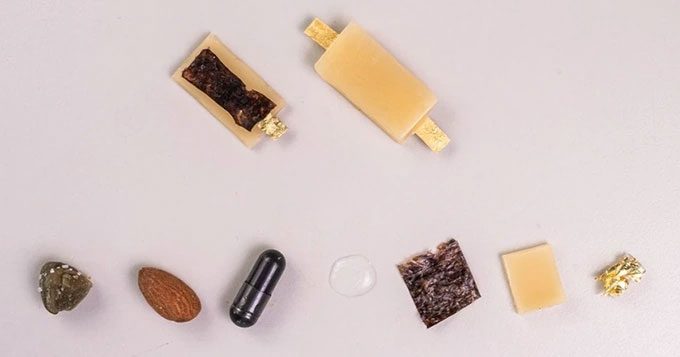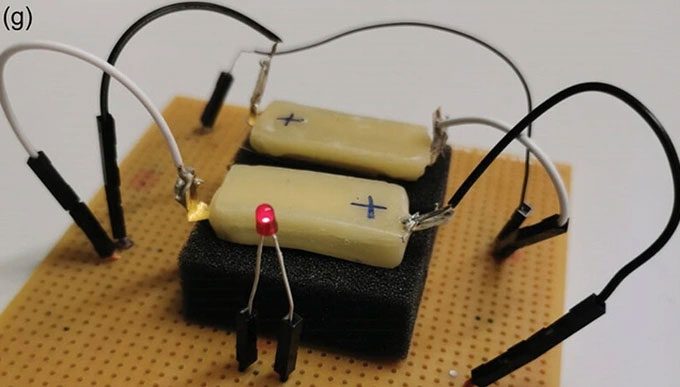Scientists Continue to Achieve Significant Advances in Electronics and Energy.
For a long time, safely monitoring and treating human health from within the body has been seen as a limitation, as the manufacturing and operation of miniaturized medical devices is not always straightforward. However, a new study on batteries has opened up opportunities in this field.

Edible battery and its components. (Photo: Italian Institute of Technology).
According to researchers at the Italian Institute of Technology, they have successfully developed an edible battery, composed entirely of food ingredients.
Made from a diverse list of components, this is the first functional rechargeable battery that can be used as a “snack.”
Its components include Riboflavin at the positive terminal of the battery and Quercetin at the negative terminal. The electrolyte used in the battery is derived from a type of seaweed called Nori.
Additionally, it includes activated carbon, a substance commonly used to treat poisoning, which enhances the conductivity of the battery.

Prototype of the edible battery in a practical test. (Photo: Ilic).
According to the research team, the device operates at a voltage of 0.65 V and provides a current of 48 microamperes for 12 minutes, which is sufficient to power ultra-small electronic devices, and is completely harmless to the body.
Mario Caironi, the head of the research team, stated: “The potential applications for this device are limitless.” He noted that this battery could be integrated into edible circuits and sensors to monitor health conditions as well as the food storage process.
Moreover, they could be used in children’s toys, where components are at a relatively high risk of being swallowed.
Industry experts highly regard this research, believing it will inspire other scientists to develop safer batteries for a sustainable future for humanity.


















































